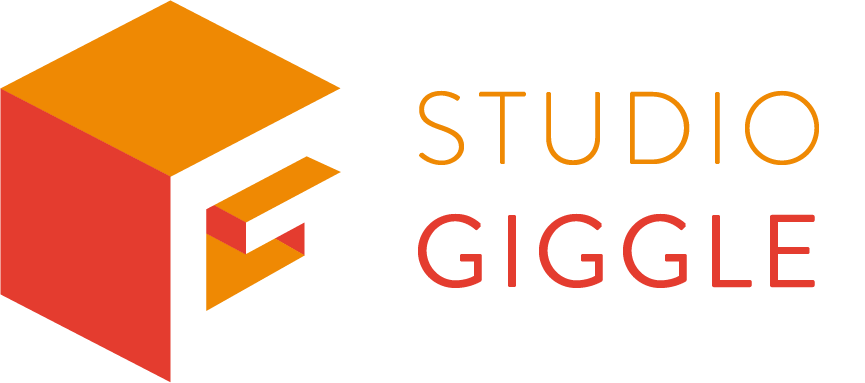Part 3 of 3… resolution to vectors.
Producer Dave has sat down with Ed Vosper and Iina Kuula, who are both designers and animators at Studio Giggle, to massively distract them and answer some terms that our clients often get muddled. Animation is seen as smoke and mirrors – so let us waft away some of the smoke and remove a few of the mirrors…
Resolution:
I: This goes back to pixels. So how many pixels you have in an image or video and the overall size of the image.
D: So what resolutions do we use?
I: Well most of the content we make is 1920 pixels x 1080 pixels, which is HD.
D: And sometimes 4K…
E: I can never remember the 4K figures, they aren’t as catchy. We go even bigger for some events.
D: Should clients be worried about resolution?
E: It depends, think about how it’s going to be used. Are people watching it on a tablet? A phone? Most people have standard 1080 devices.
D: Is more effort to make a 4K animation than a HD one?
E: It’s not harder or easier, it just comes down to render times, because the computer is churning out way more pixels.
D: We are happy to work in 4K and have the capacity, we just need to know at the start.
RGB:
I: This is the Red, Green and Blue within an image.
E: Different amounts of red, green and blue can make up any colour in the world. So as well as Hex Codes you have RBG values.
D: In colour grading they are important. If you were grading footage of someone’s face and the client thought they looked a bit orange, you’d take some red out, and maybe add a little blue in. It’s a good way of warming someone up or down.
Rigging:
I: You are taking the character that you have modelled and then adding a skeleton to it, so you can animate it and bring it to life.
D: So you are puppet making?
E: Always remember the song… the knee bone’s connected to the thigh bone…we literally call them bones because that’s what they are.
Rotoscoping:
E: It’s kind of tracing the frames of an image. You are using a video and turning it into an illustration.
I: The same term is used when you are cutting someone out of a green screen, you’re cleaning and chopping something out.
Scratch VO:
E: Often when we working with clients, the script can change at any point – which is never to the animators liking! So that’s why we do a scratch voiceover.
D: If we paid the proper voiceover and then called then back in to change something that would take time and money. If one of us in studio is reading the script, to check the wording and the timing, then we don’t need to wait for the proper voiceover.
E: It’s good for timings, we use the scratch as a base to plan things out.
Storyboards:
I: It’s taking the script and turning that into a sequence of images
D: A magical grid…
E: It’s the first time that a script is visualised.
D: Why are storyboards so important?
I: It gives the client, and us, a really clear idea of how the elements are going to look and what the characters are doing before spending loads of time making it and getting it wrong.
D: It’s quicker to amend storyboards.
E: Yeh, i’d rather make 10 versions of a storyboard and get that right first rather than amending the finished film. Storyboarding is the exciting part and most important phase of any of our animations. If you nail the storyboard then you know the animation is going to work.
D: It means there are no surprises for the client too. They aren’t just going to have “version 1” plonked on their desk, and be shocked, because they have seen the storyboard first.
Style Frames:
I: These are single frames taken from the film, that are an accurate representation of what the final film will look like.
D: It’s showing off the style and nailing it first, particularly characters, getting them agreed first. If a client isn’t sure on what style they want this is where we can give them options – maybe a serious style where a character has no facial features, or a silly one where they have big goggly eyes, and maybe something in-between.
I: It’s also a chance to experiment with colour palettes and decide on mood, whether then want something brighter or more toned down.
Texturing:
E: This, in 2D and 3D, is a way of adding more detail to a scene – maybe you are making something look more dirty, or more shiny. You wouldn’t do this in the storyboard, you’d save it for later, to add more character to the elements. Let’s say you were designing a road you’d start off with a solid base grey layer and then you’d add in the dirty tarmac as layers.
I: Say you had someones clothes, you’d be thinking about how it reacts to light, adding in strands of material.
Timecode:
D: This is a ticking clock showing the seconds as they pass while you are watching a film.
E: This is very key in the animatic stage. You see them in films, they are very good for pacing.
D: They are good for amends too, sometimes we’ll put a timecode on top of a video. (If we don’t, you can just use the play bar on Vimeo for the same thing). That’s how you give clear feedback, you say “at 01:23, X needs to change” it removes all doubt, so that we aren’t guessing.
E: It’s also good as a watermark! So people don’t steal our animations.
Timeline:
I: In After Effects or Cinema 4D (3D software) it’s the working area that shows the whole length of the piece, and that’s what you pile all your layers and effects onto.
D: It’s the artist’s canvas, everything that makes up the film is on the timeline, in order.
Transitions:

E: This is moving from one scene to another. These could be wipes to show the end of a chapter.
D: Dissolves, fades, flashes of light…
E: Star wipes are always good!
(Image used for illustrative purposes, Studio Giggle do not endorse star wipes in ANY way).
Vectors:
I: A vector is an image (not photos) that you can just keep enlarging as much as you want.
D: We always prefer clients to give us logos in vector form.
I: Yeh, then we can make them as big as we want without losing clarity, with no limit.
D: If only we could do it with video.
E: If only! Maybe in the future.
Phew… that’s your lot! We might do another one of these if there are any other terms that people would like explained.


